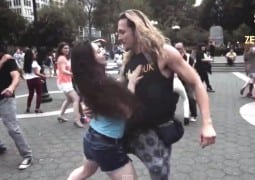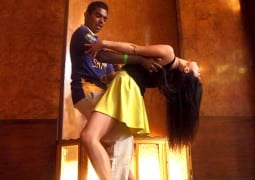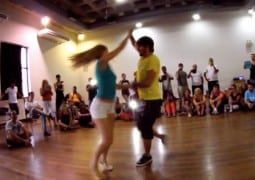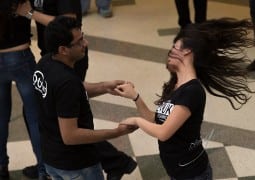Zouk Compared to Other Dances in Los Angeles
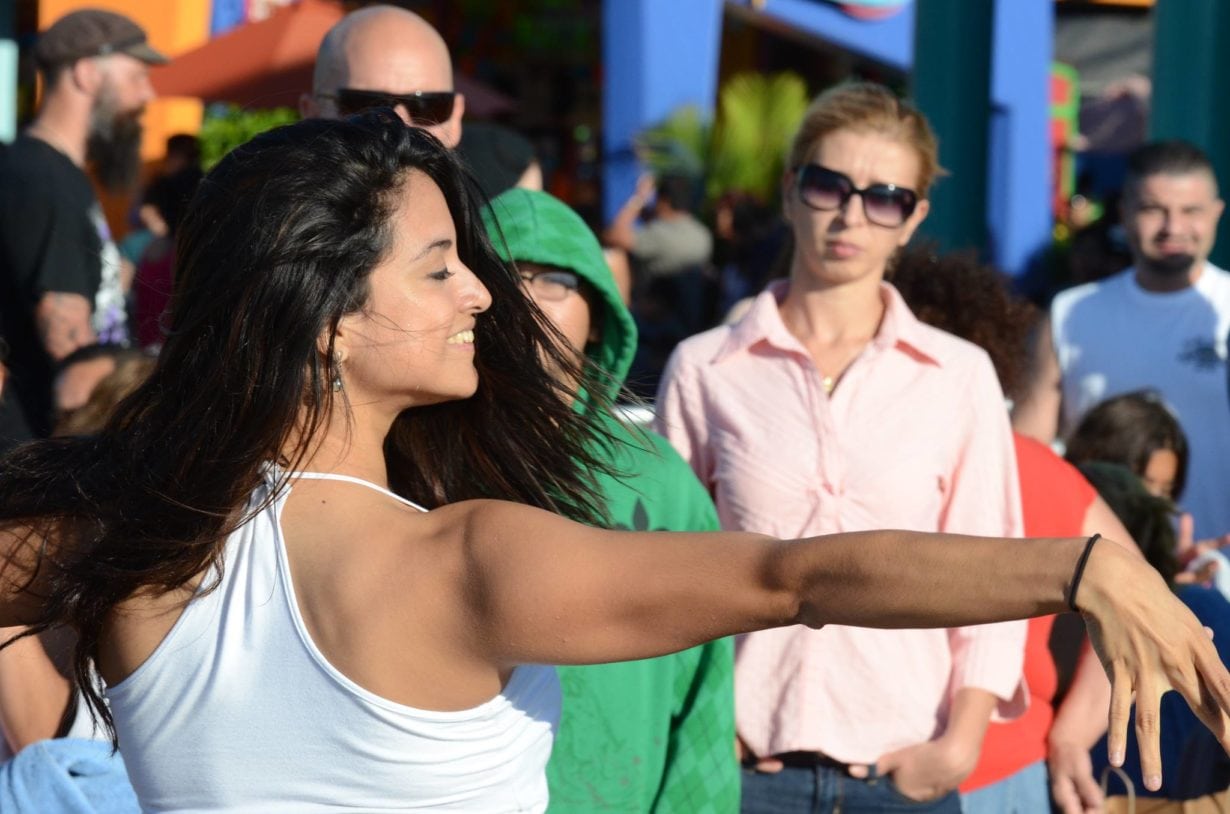
3 years ago, I was blessed with the opportunity to move to Southern California. Before this, I lived in the country area of Pennsylvania for four years. So you can imagine my how excited I was for the beach, the nightlife, the warm weather and the sun-kissed surfer boys. Little did I know what was really waited for me beyond all of those things.
A year into living in Orange County I was exercising at a local gym when I decided to go into the studio room to continue with my not-so-strenuous workout routine. As soon as I entered the room I noticed a group of people that were practicing something that looked like acrobatics fused with Latin moves and dancing. I was perplexed. I had never seen anything like it before. As I watched the dancers in amazement, I felt someone push me over to ask about what was going on. I asked them, “is this a dance group? A performing dance company?” “This is Salsa”, they said. I had recognized the beats and the music but I had never seen partner dancing like this before, especially with the flips and things. “Can I join the class?” I asked. “Yes, of course,” the instructor said. I could not believe something so exciting was readily available to me.
My dancing experience began that day, about two years ago, and I have not been able to stop since. As I grew into the dance scene and experienced the salsa clubs, the workshops, the congresses and a couple of different amateur dance companies, I became exposed to other dance styles. In LA, one of the dances that goes hand-on-hand with salsa is bachata. You see both of these styles being taught as part of the same social events and workshops. The common ground for both styles is that they are both danced to very popular music in Latin America and are greatly influenced by Cuban rhythms. As a good bachata and salsa social dancer you want to have a good connection with your partner, maintain a decent amount of balance on your own and, preferably, have a repertoire of footwork you can choose from so that you can “shine” in front of your partner (or you can make it up as you go, as I sometimes do).
I have found these styles to be very enjoyable and full of energy. Not to mention how much I enjoy the Latin music, having been born and raised in the amazing country of Peru. However, when I first saw Zouk, there was something about it that I could not find in these two prominent dances of the LA area. What was it about this genre that enticed me every time I saw a couple dance? Perhaps it was the sensuality of the moves, the art of the arms and the head motions, or perhaps the deep level of connection that I see whenever a woman and a man dance Zouk. Connection is one of the main things that impressed me about Zouk, the level of connection between partners and the depth of focus that you have on one another.
I have been dancing Zouk for six months now and I have come to appreciate how much I need to be connected with my partner. In Zouk, the connection can happen with my fingers, my hands, my arms, my elbows, my shoulders, my back, my neck or my waist (more advanced dancers perhaps can acclaim even more areas of connection). To understand and feel what message my partner is conveying to me and how he or she wants to move my body, I have to be alert, attentive, feel every move and let myself follow.
Every move has a beginning that does not end but transitions into the next move, slowly paced. Zouk can be fast but it does not need to be. A slow move can be just as beautiful, impactful, and romantic. This is a huge difference I have found when comparing Zouk to salsa. Salsa is upbeat, it is a celebration of people together and it is very lively. In order to convey this excitement, salsa is mostly fast and the focus may not be on your partner as much as it is dancing to “shine” and “impress”. Leaders want to have the best moves, fast and full of turns and, from time to time, they let go of the physical connection with their partner in order for them to do a little footwork that hopefully impresses you (or that you hope, does not beat yours).
In Zouk, you are not so focused in impressing the other person as much as you are focused in trying to feel the music together and move together in unison to send a message as ONE. This is one of the things I love so much about Zouk: I am connected with my partner at all times and we are working together to achieve a move as one, let it be a cambre, a chicote, the “roasted chicken” and all of those other indefinite body movements where you engage your abdomen and torso to bend forward, backwards, or from side to side.
Another very important feature I have learned about in Zouk is that followers must have a big deal of balance of their own. In some movements, Zouk requires a follower to bend the body at different levels simply by tilting the head, or moving forward or backward with your chest, or to bend from the level of the belly button at abdominal level. When changing the gravity points so quickly and diversely, an individual must have very good balance to maintain the position and also to continue on to the next steps without stepping out of balance so that the movement is displayed smoothly. To achieve this without having formerly trained on balance such as ballet can be quite challenging. I have seen ballet dancers progress more rapidly than students that lack this classical training. As a salsa and bachata dancer, I have encountered somewhat of a challenge with spinning multiple times but never so much balancing outside of the turns. It seems that most of the moves that make up salsa and bachata are done standing straight up and as long as you keep your balance at the center of gravity on this position then you are good to go for the rest of the dance.
I find Zouk to be very artistic and emotionally expressive. Beyond the emotions of happiness and excitement, you can convey sadness, anger, love, rejection, passion and perhaps all of these at once. Zouk gives room for individuals to express themselves on the dance floor; with extended legs, open arms, a rotating head or a sensual move. Maybe this is the distinctive feature that Zouk has compared to other dances: it gives us all the opportunity to express our own very deep feelings without boundaries, without judgments, simply and freely.
You may also like...
Sorry - Comments are closed


